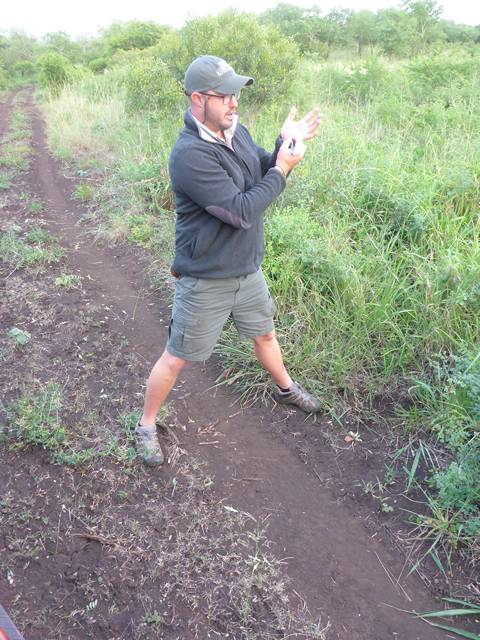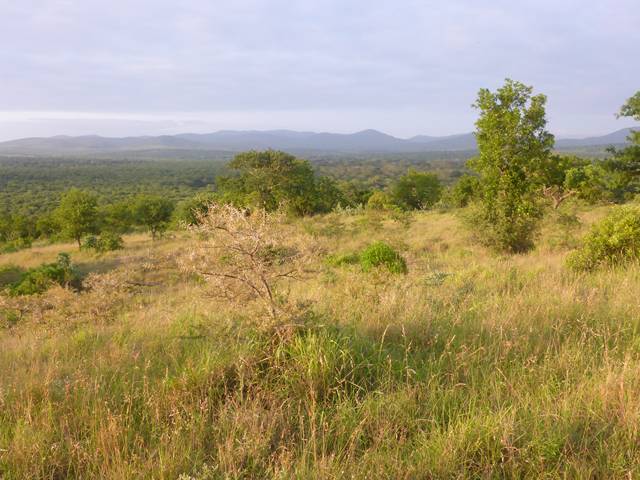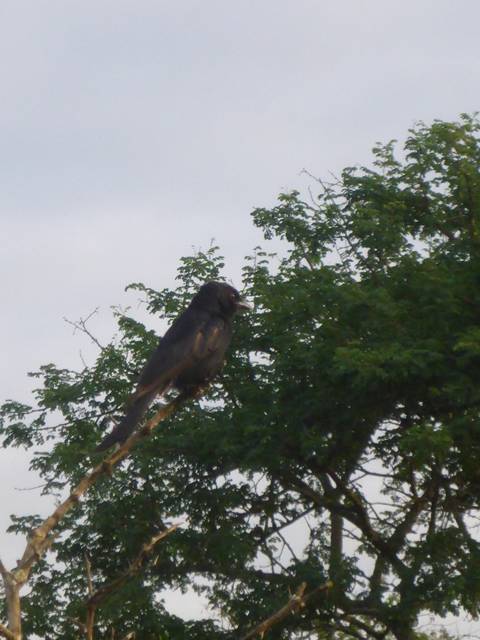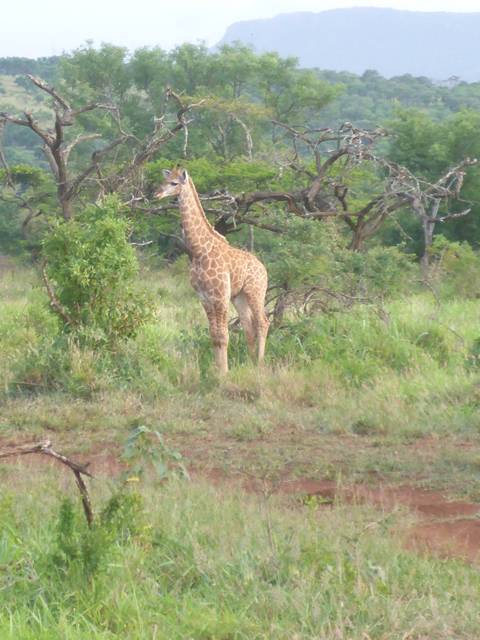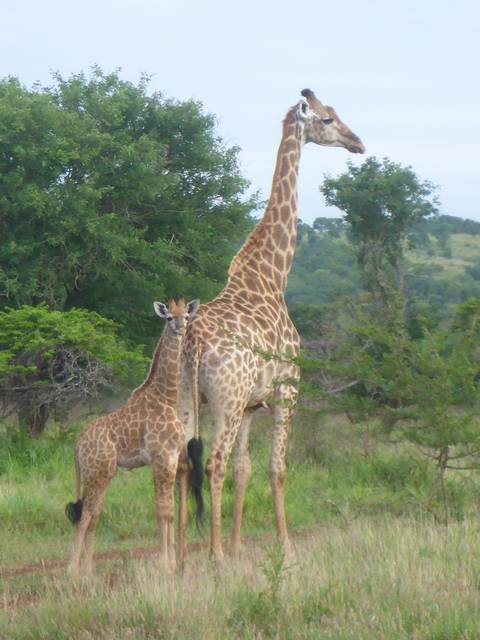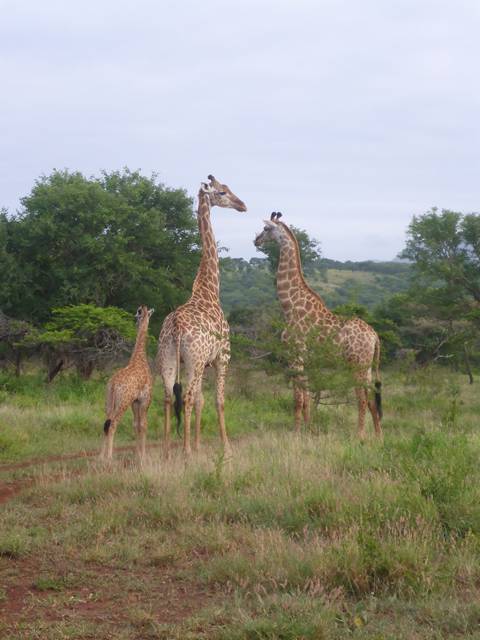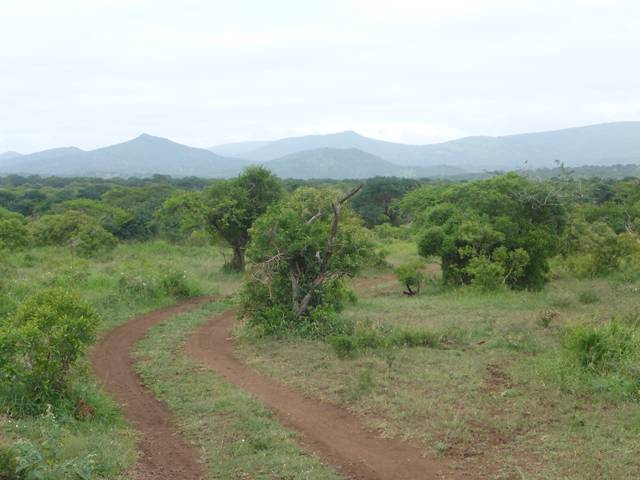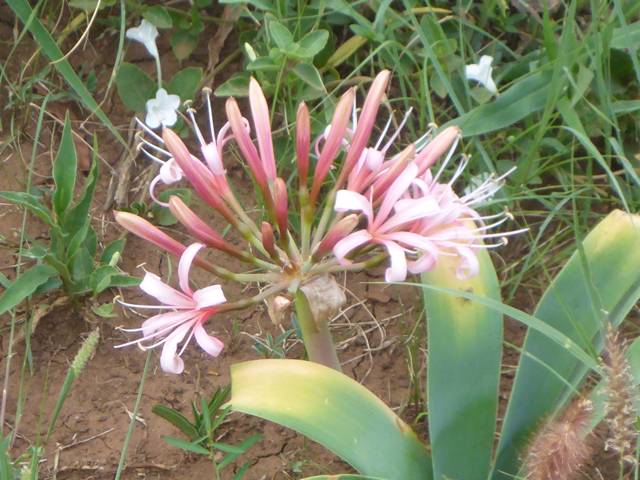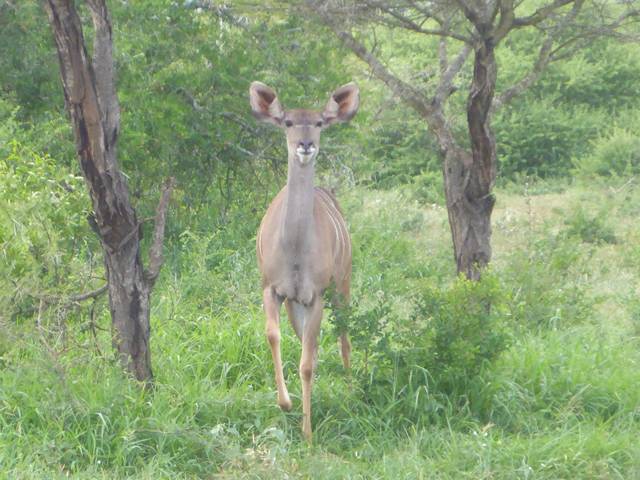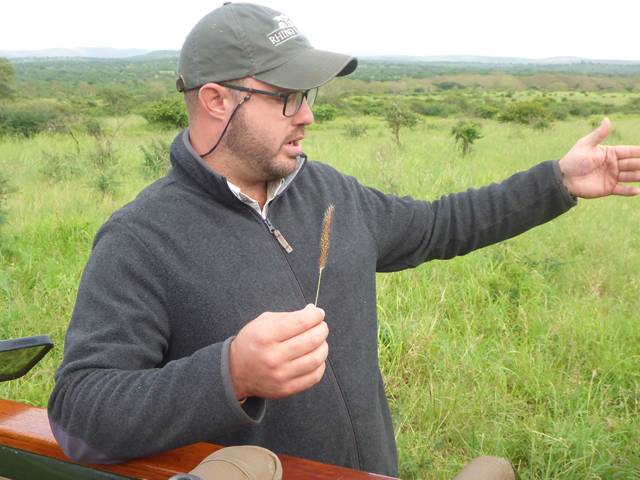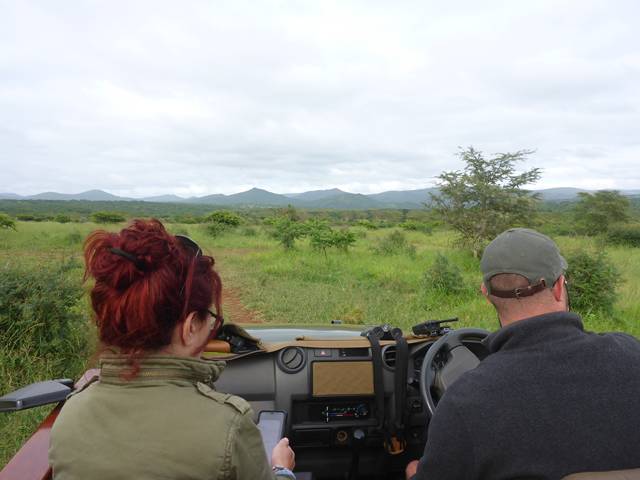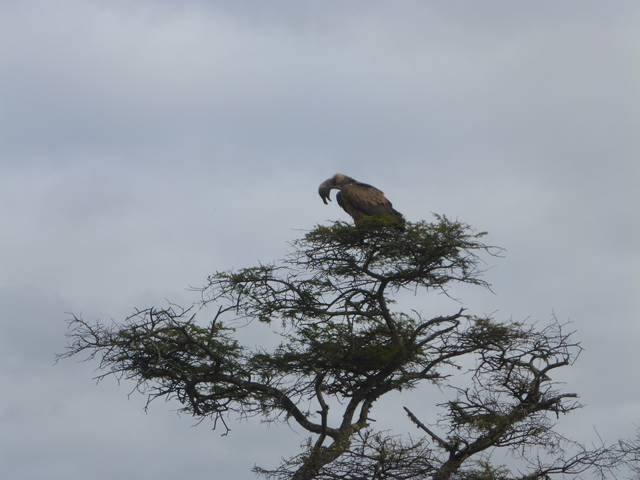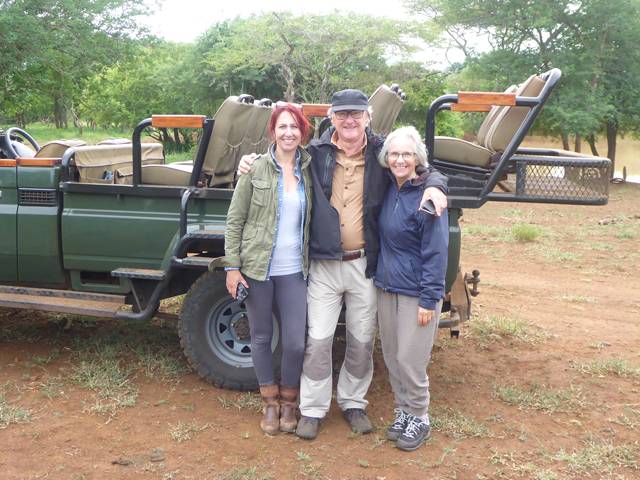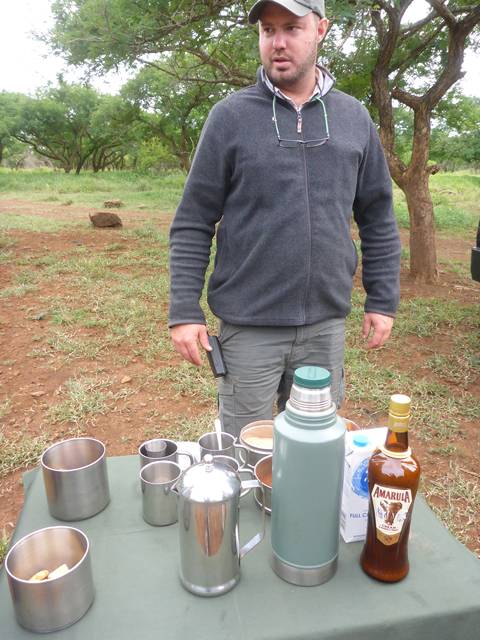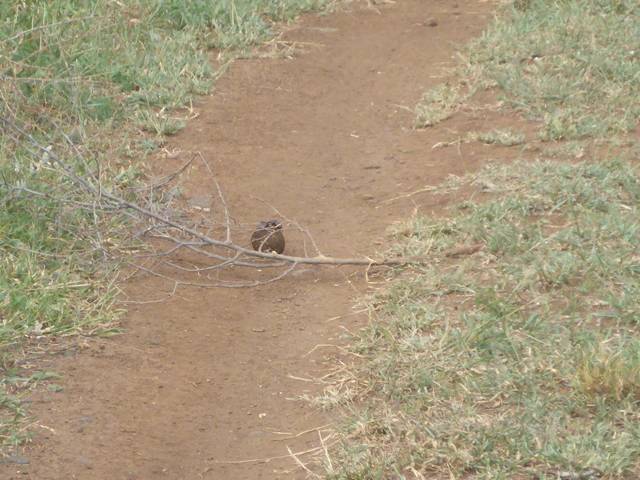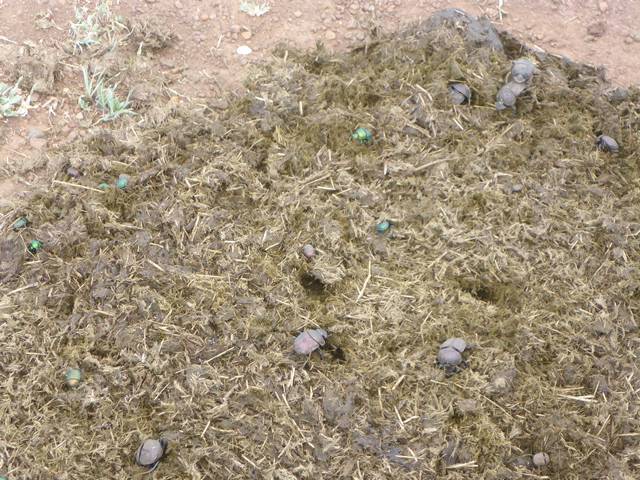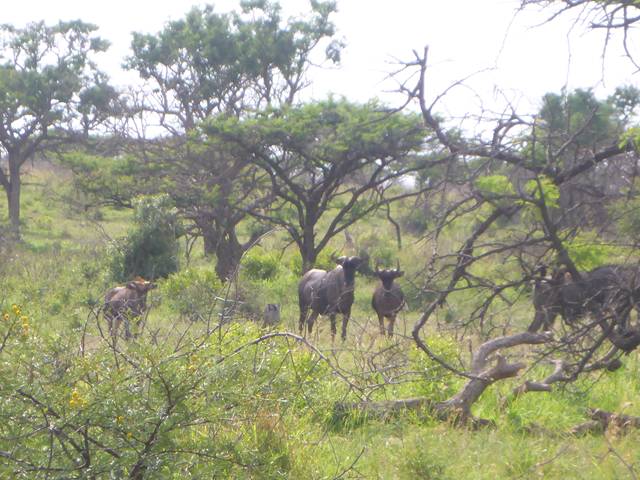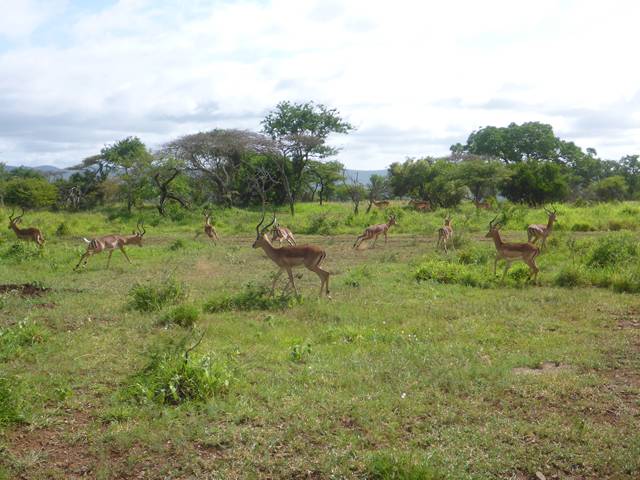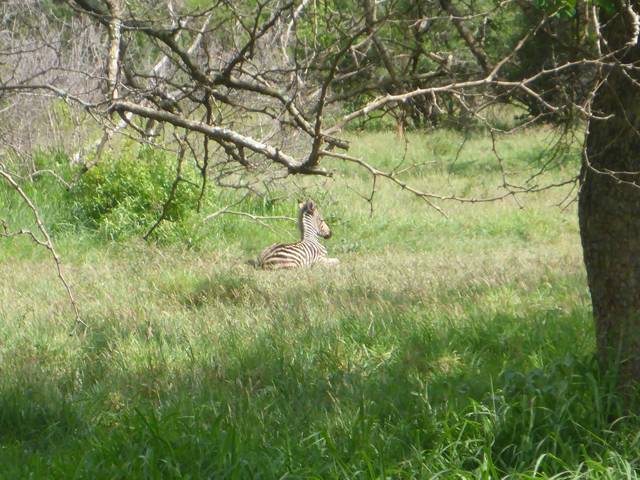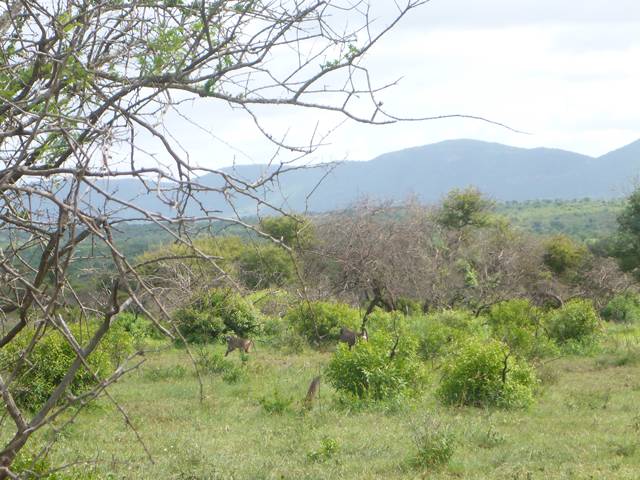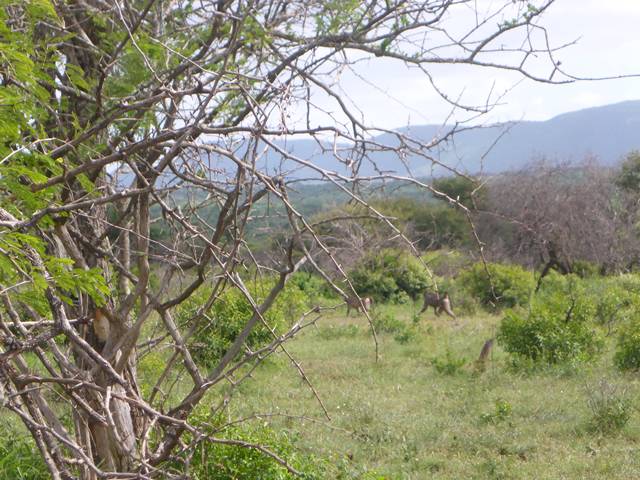Just a Tick

|
Just a Tick Miniscule unexpected visitors join our Safari Clair told me yesterday that Annabelle is now back home and her usual happy, bubbly self, Mum and Dad are keeping a close eye on her until the test results come back. On the morning of our third day Kyle was getting some rest so we were with Johnno once more, leaving behind our cosy, insect proof bed and very quickly discovering birds new to us and old friends now. Before we started on the safari I secretly held the wish that I had my big Canon camera with me with the 300mm lens and I could have done with it for the bird pictures as you can see. But it is impractical to carry it on board in the moist salty atmosphere when I normally use it so infrequently. The day was lovely and fresh to begin with and I wanted to capture the first sunlight on the grasses, the mountains you see in the distance in their cloak of slate grey are the Lebombo Range, the longest range in South Africa, so Clair tells me and the black bird is a Red-winged Starling. Johnno left the vehicle to show us hyena tracks from the night before and drew the print on his hand and then we came across another relaxed family group of giraffe who posed for us beautifully I thought and I was finally able to ‘shoot’ the pretty pink lily that dots the bushland. We really did come at the right time with all the flowers and young animals. The pretty female antelope is a Kudu, the males have magnificent curled antlers pointing upwards. We sat in blissful silence to watch the white rhino and her baby grazing. They de-horn them here to protect them from poachers, but as the horn continues growing they have to repeat the procedure. The rhino are darted from helicopters and then the ground crew can come on quad bikes, with guests if they want to, to carry out the procedure as quickly as possible. As Leticia quite rightly said, in what other part of the animal kingdom do you have to disfigure and disarm an animal to increase its chances of survival? We watched as the rhino mum moved behind us and across the road and then the baby decided we needed some attention so very cautiously, moving from side to side and nibbling grass on her way, she came closer, being very bold, until she frightened herself by getting uncomfortably near, jumped in the air, turned and sped back to mum. We were moving onto open savanna now with fewer trees and the broad variety of grasses swayed with the gentle breeze. Johnno explained that some of the grass species are unpalatable to animals including the single stemmed one he is holding and I asked him if there was any Sweetgrass growing. He confirmed there were sweetgrasses there which are valued as food and very high in protein. In case you are interested I have recently been reading books written by indigenous authors from Australia and North America and ‘Braiding Sweetgrass’ by Robin Wall Kimmerer, a member of the Potawatomi Nation who lives in Syracuse, New York. She writes passionately yet scientifically about her own inherited indigenous knowledge of the environment blended seamlessly with modern science. The knowledge she gives freely to her students is essential now and will be even more so in the future as we face human created environmental challenges. We saw the pretty little Red-backed Shrike on numerous occasions and as we rounded onto the track Rob and I had travelled in on from the gate I spotted nine vultures spiralling upwards on a thermal. The sun was beginning to show itself and these big birds wait for the land to heat up and send warm air upwards to help them fly, an otherwise energy consuming activity. Right next to the track atop a spindly tree a white headed vulture was rousing himself. He obviously wasn’t quite ready to take off. In the distance Johnno picked up a bigger Lappet-faced vulture, so we sat silently taking in their behaviour waiting to see what would come next. Well our nearby one defecated and shortly afterwards regurgitated a crop full and as Letitia suggested, freed of that weight he was now ready to go. Fortunately I did manage to capture his take-off on film. We stopped by a waterhole for our coffee break before continuing and you might wonder what the dung beetle did with its dungball as it came to the twig lying across the track – we did. Well he rolled his golf ball sized prize over the grass on the right and back onto the soil. Staying put until he was clear behind us, we didn’t want to sit in the face of progress after all. The bush and savanna are kept very clean and we only saw one two week old carcass of a wildebeest, its head and top ribs were all that remained because of course there is much nourishment in bones. I have already mentioned how the dung is disposed of and what is left dries out in no time in the heat. Once or twice we surprised a herd of impala by coming suddenly around a bend where they were grazing. This time was quite impressive and the group comprised forty or so adult males who leapt and grunted as they sped away. My photo doesn’t do justice to the frantic scene and it was exciting to see how agile they are, especially when some kicked their hind legs high into the air as if to say “Don’t mess with me buddy.” The last three photos show a pack of Baboons in the distance, again oh for my other camera. Johnno mentioned how they are about the most disliked animals around and he has special cause for his feelings. His aunt was carrying her young son with a coat over him when a baboon ripped the coat away thinking she was carrying food. The little boy fell on his head and has never fully recovered going into a paroxysm of fear if anyone mentions the ‘B’ word. To end on a slightly less tragic note, I had chosen to wear light-weight trousers that morning and did not realise the risk I was taking with the loose weave of the fabric until I noticed a tiny black object about the size of a pin head clasping onto my ample tummy. I scraped it off to discover it was a tick; one of quite a few that Rob then kindly proceeded to scrape off my back, bum and legs, my having dealt with the ones on my front, and they got almost everywhere I kid you not. I found the queue of more on my trousers waiting to leap onto their host and gave them a good shaking out of the door. Jady knew straight away what they were, the nymph stage of the tick and research tells me that a single dose of antibiotic will reduce the risk of Lyme disease which is little known here in SA. So I have taken the single recommended dose and will be watchful for any symptoms over the next few weeks. Ticks carrying Lyme disease attach to the skin for 24 hours before they start feeding so as these were only on me for three hours or so I think the risk to me is small. I’ve often thought there are far more hazards to a land-based life than living at sea.
|

